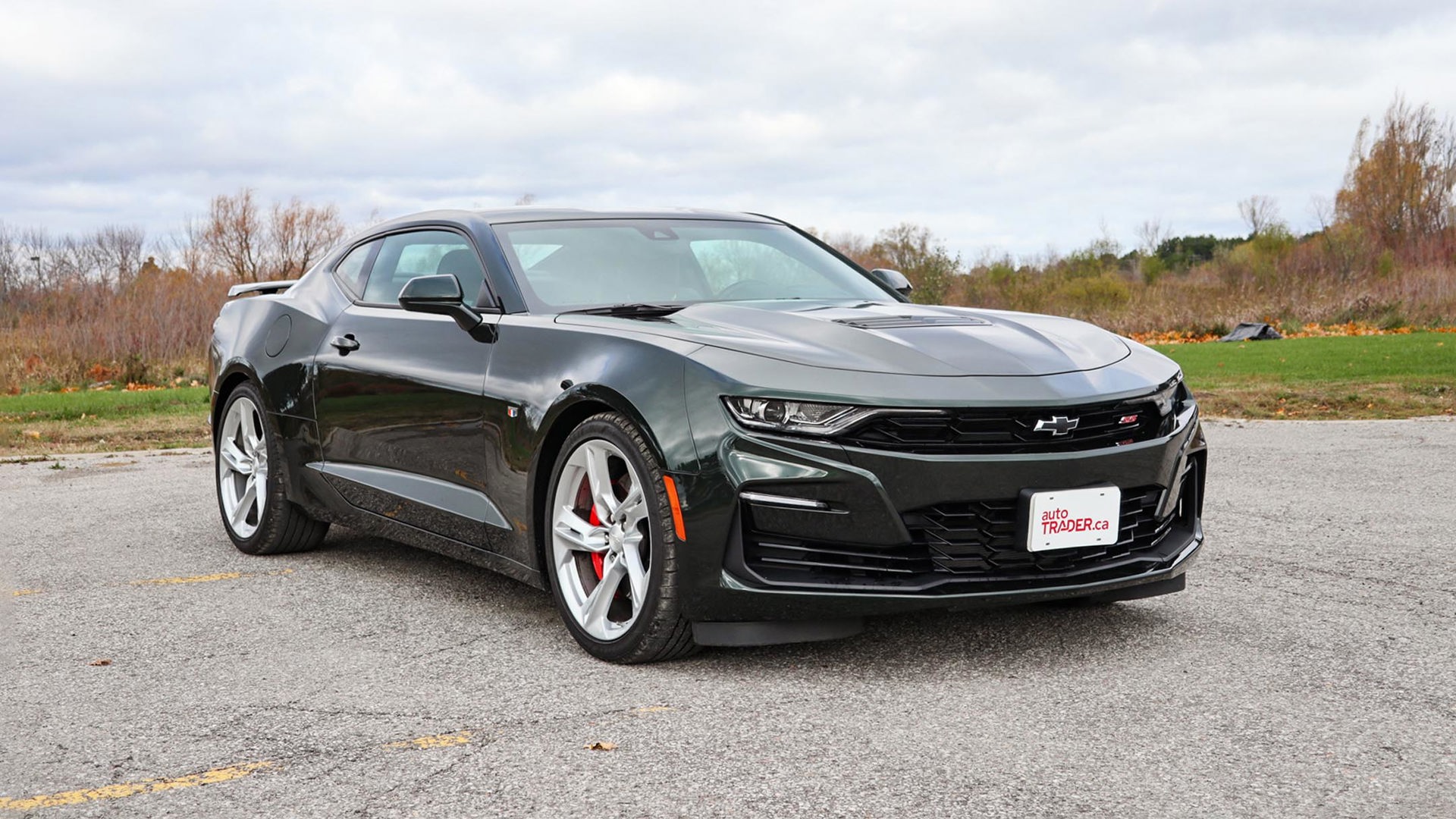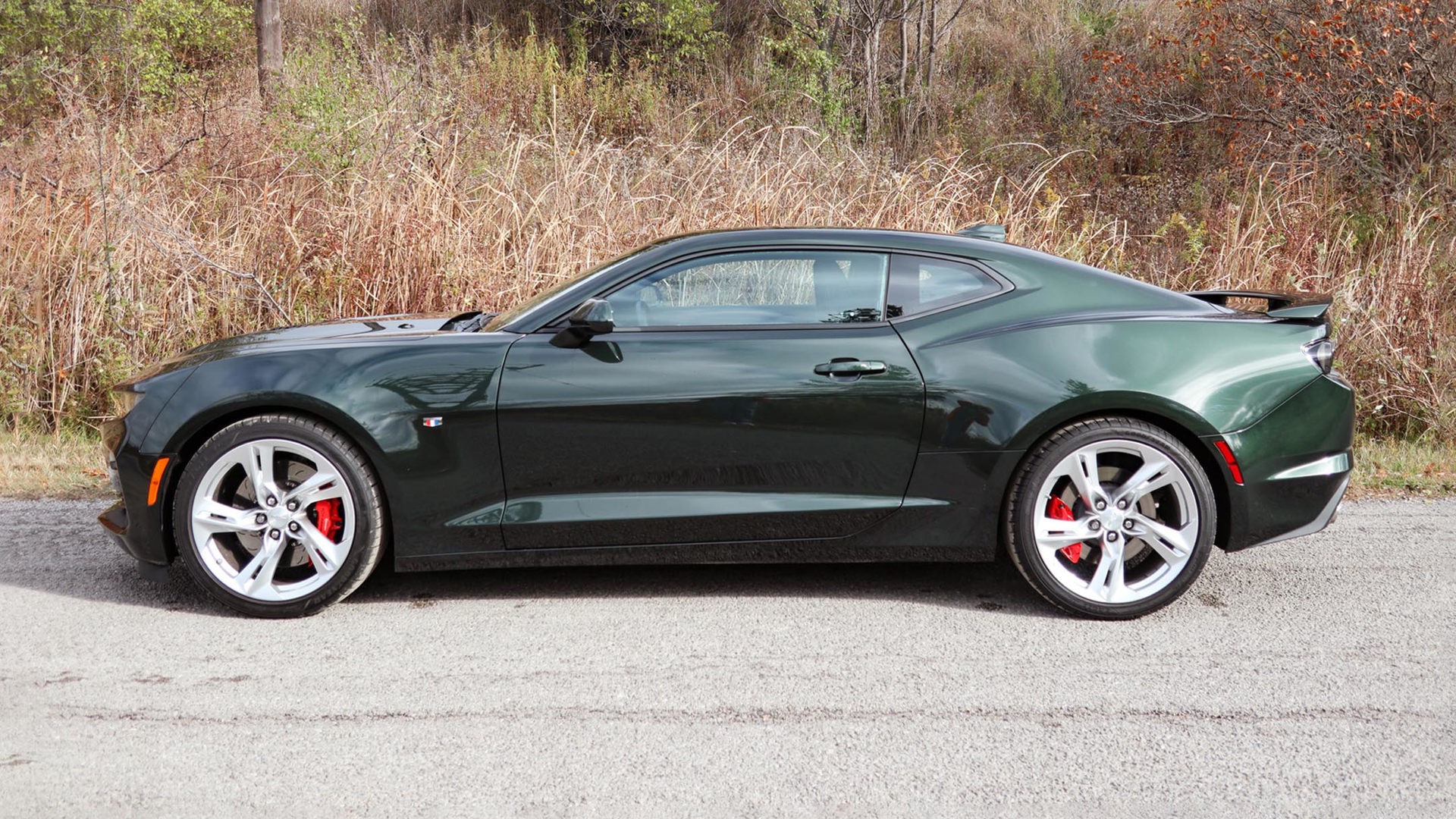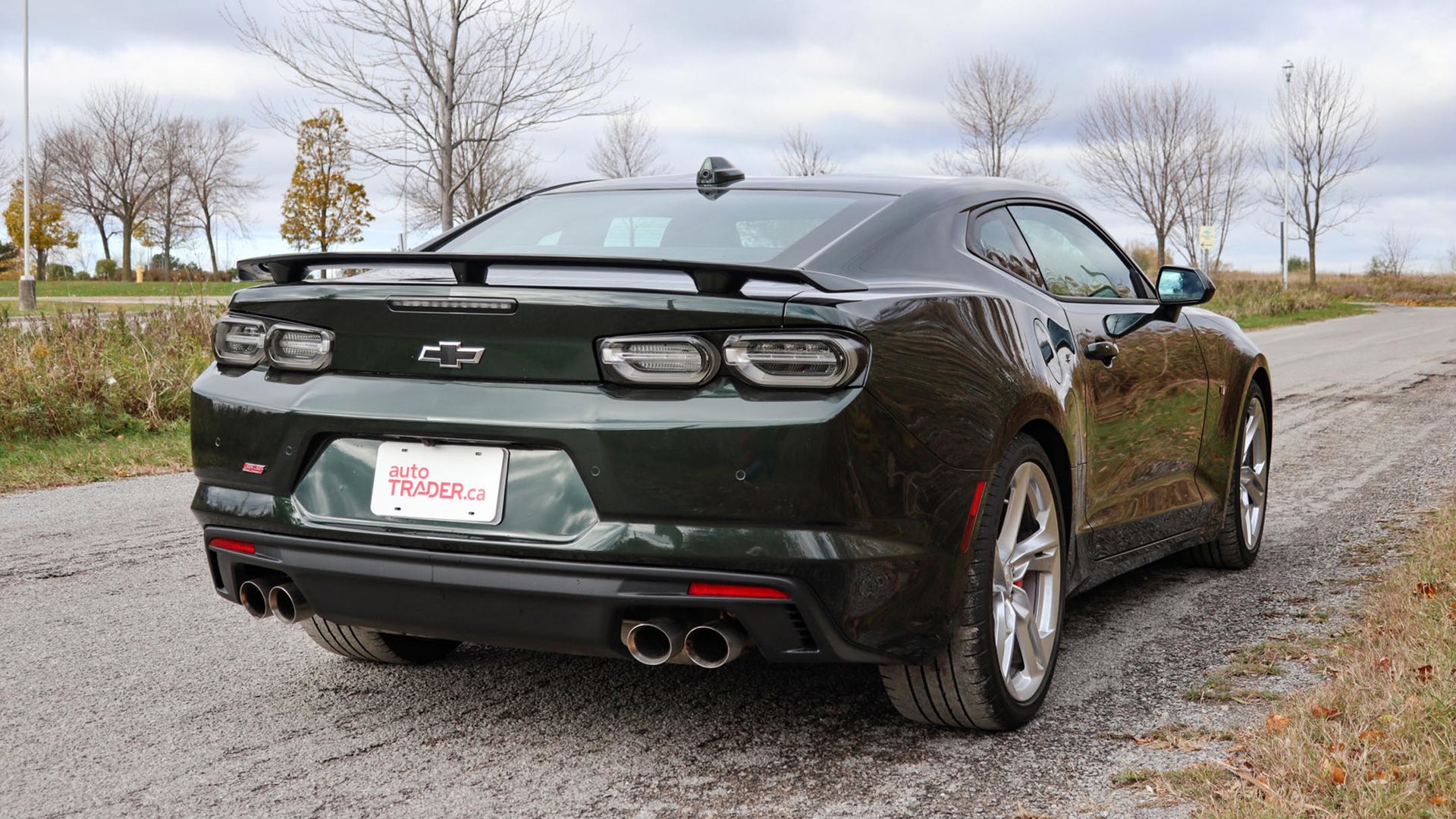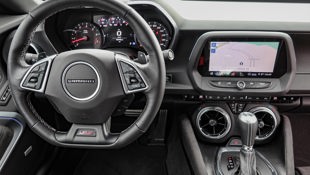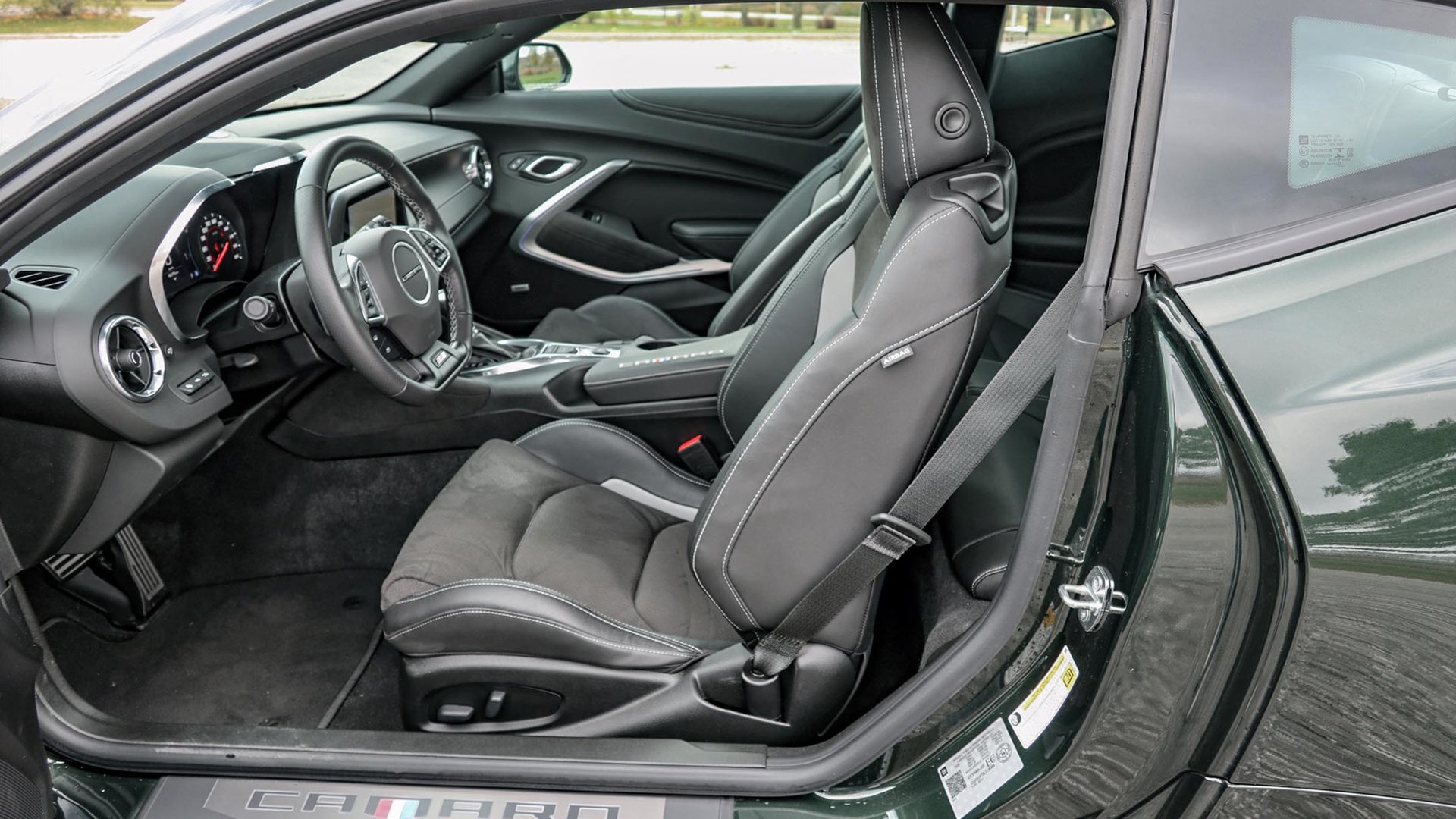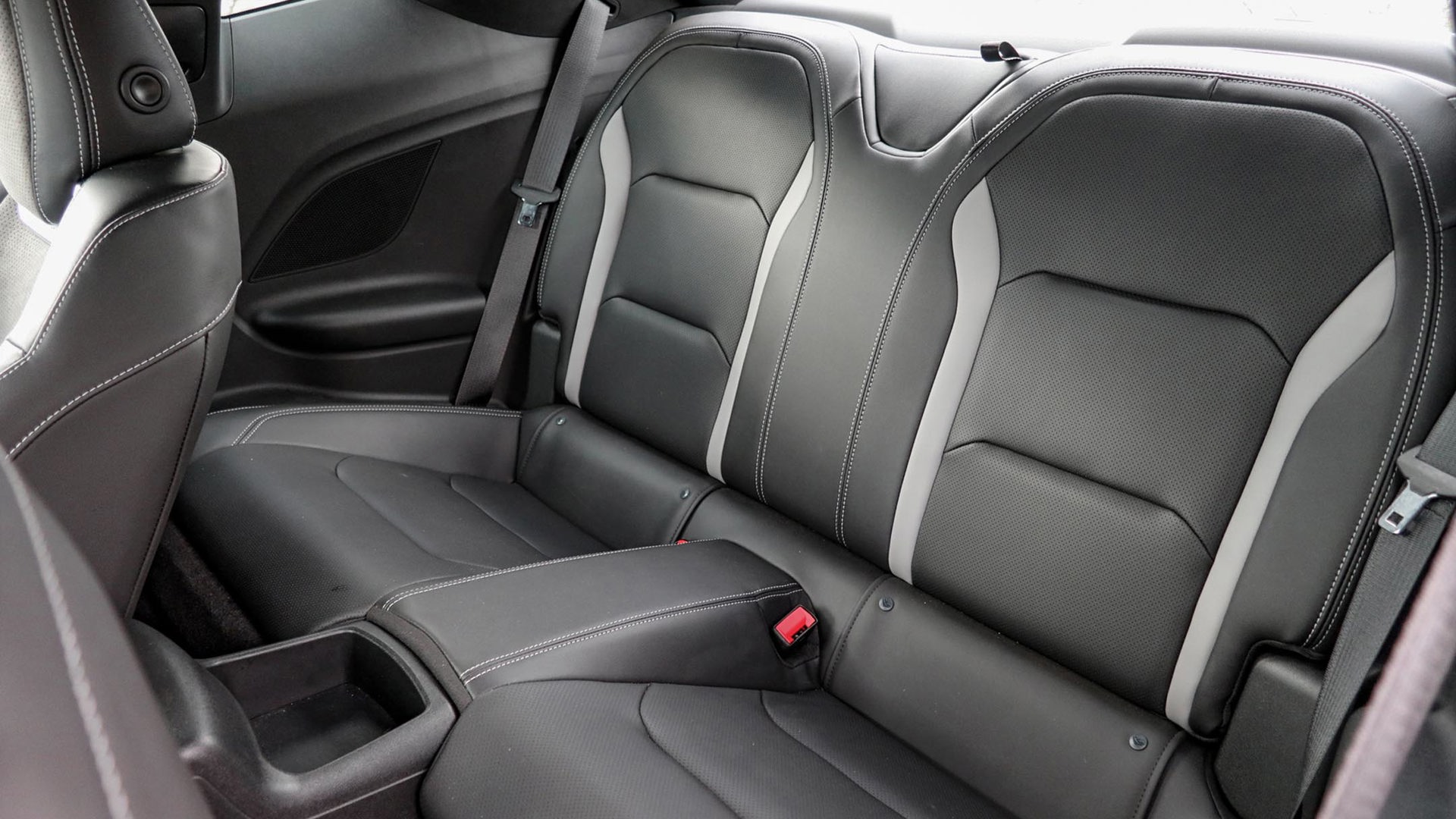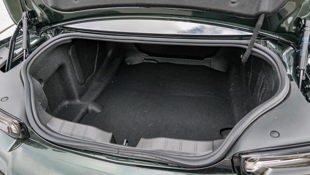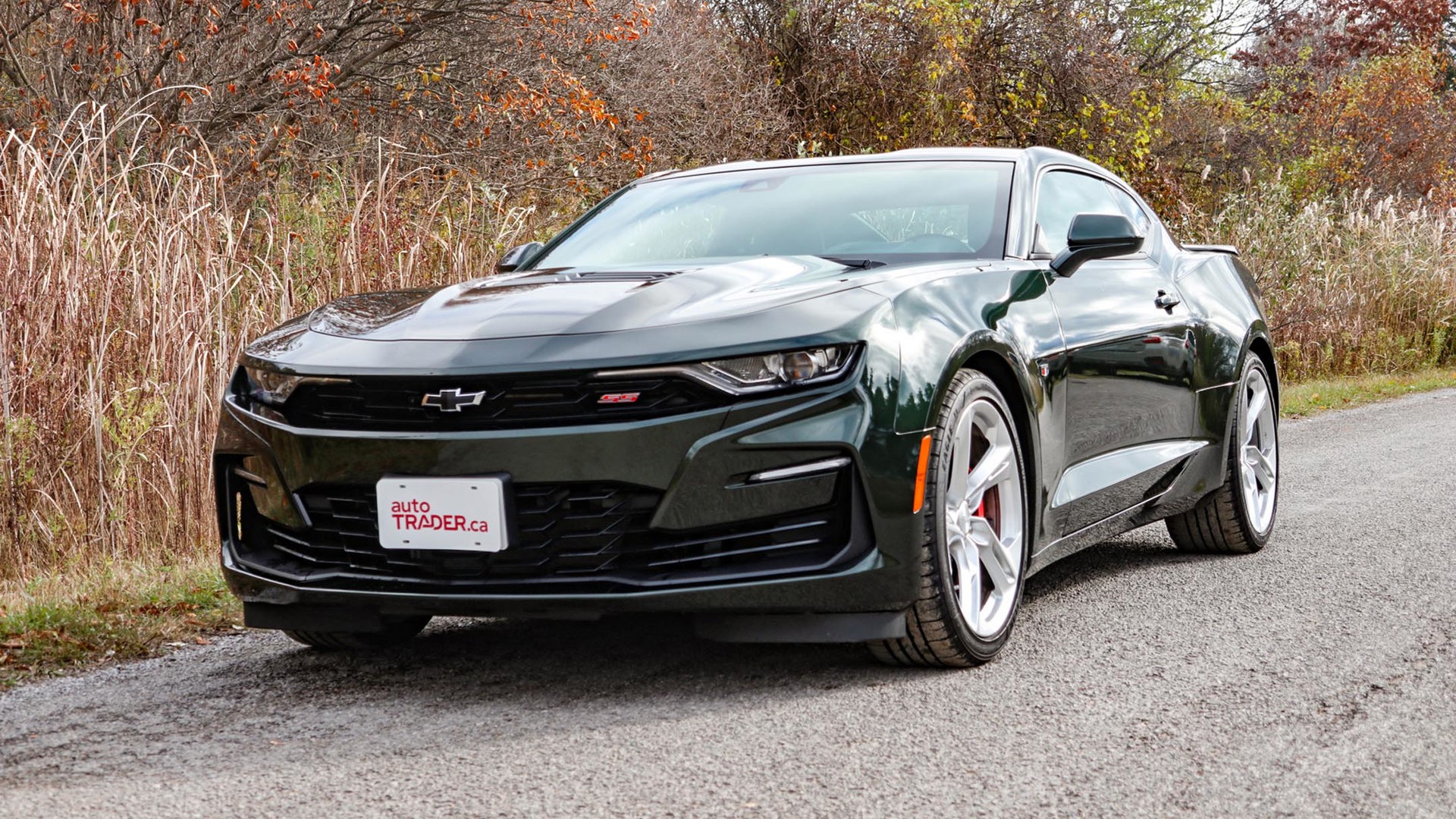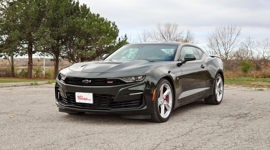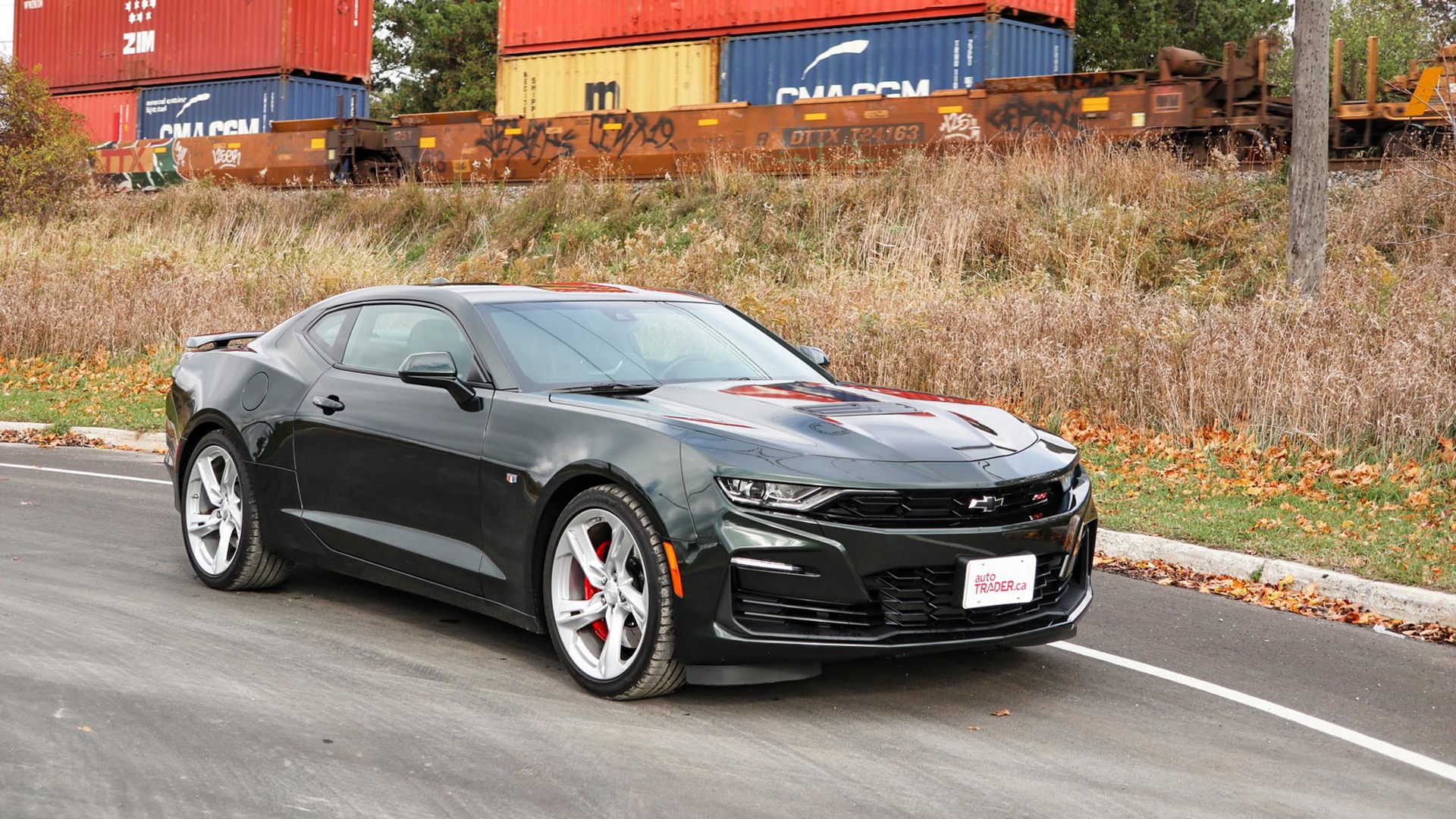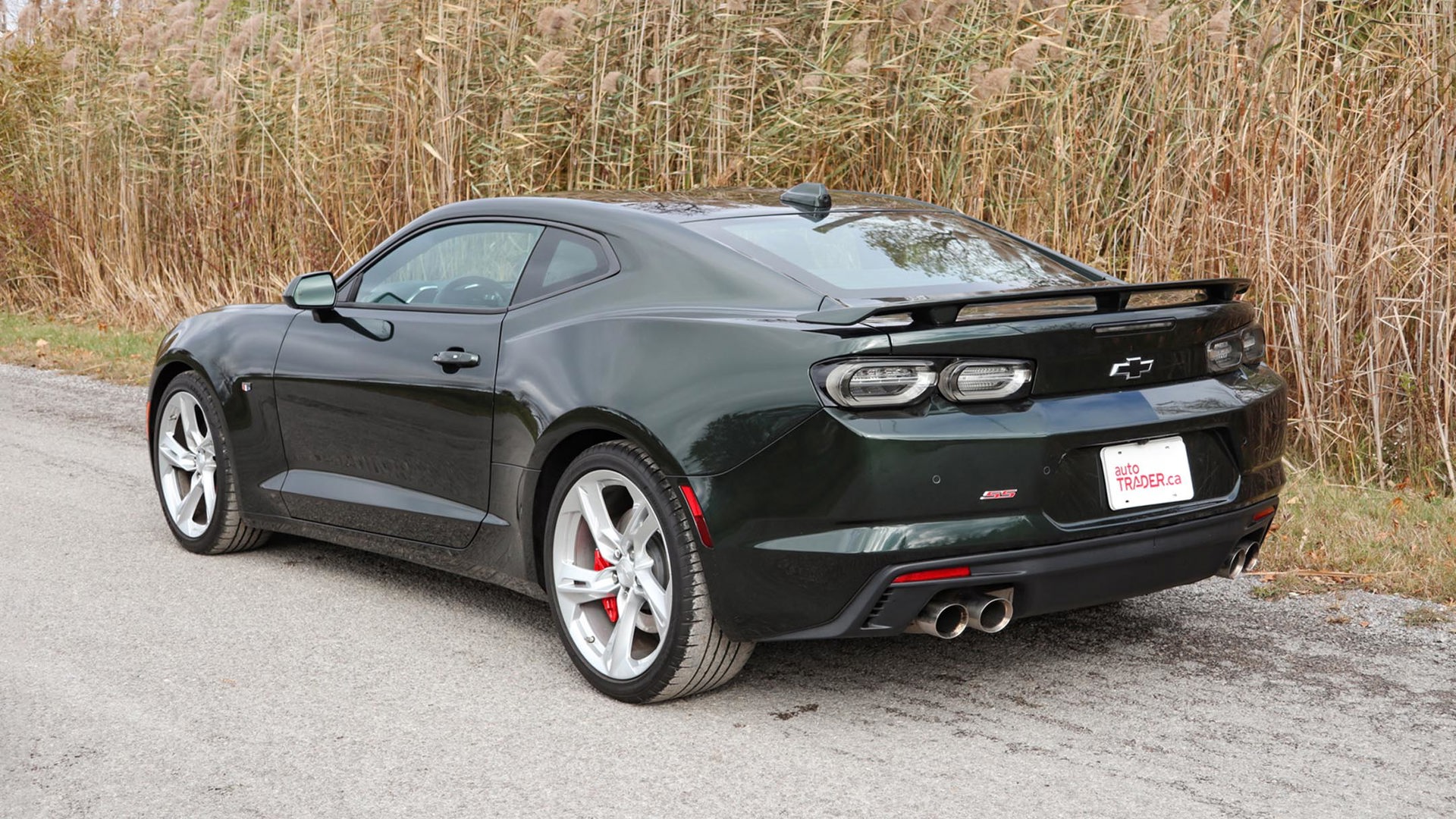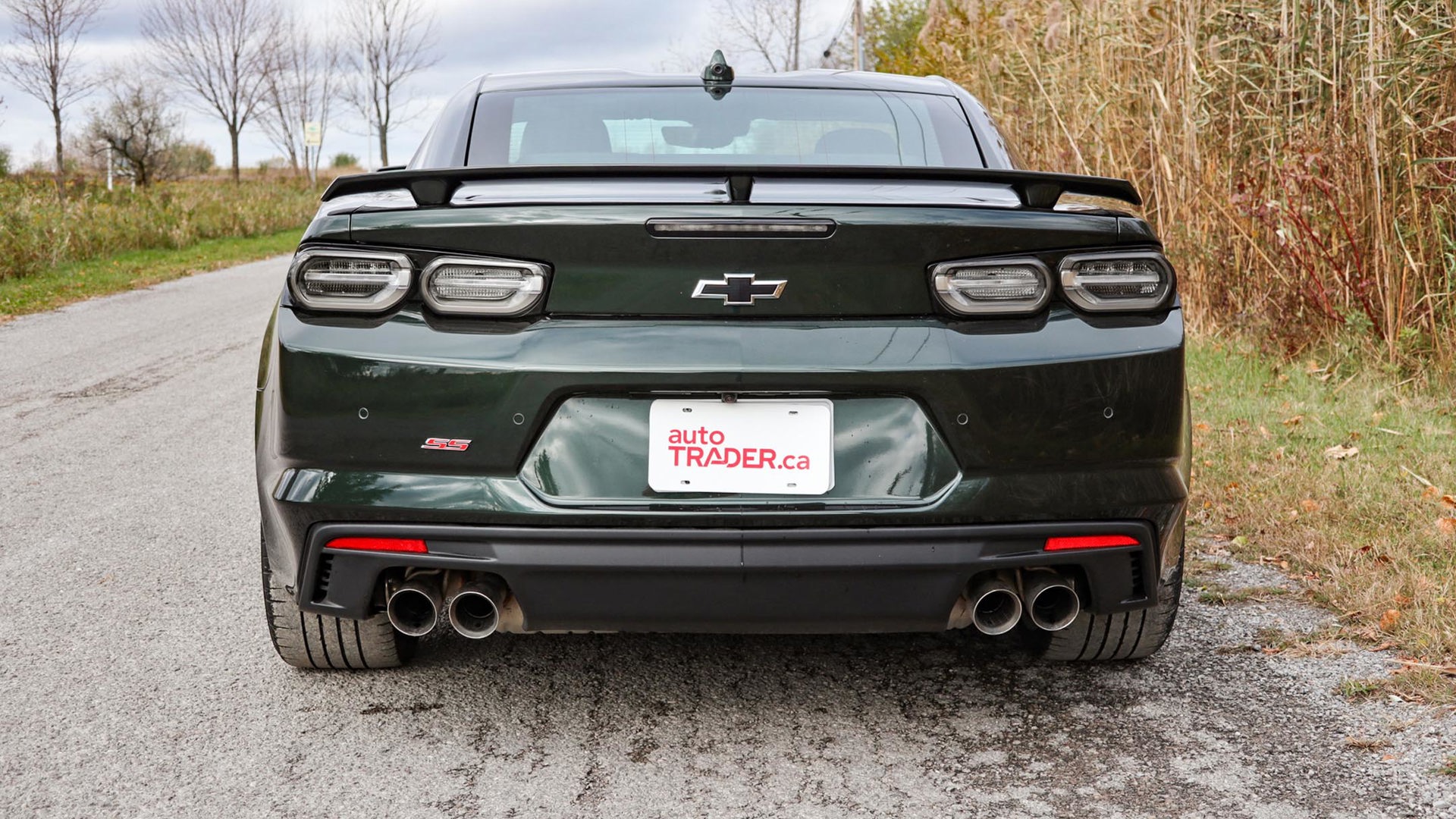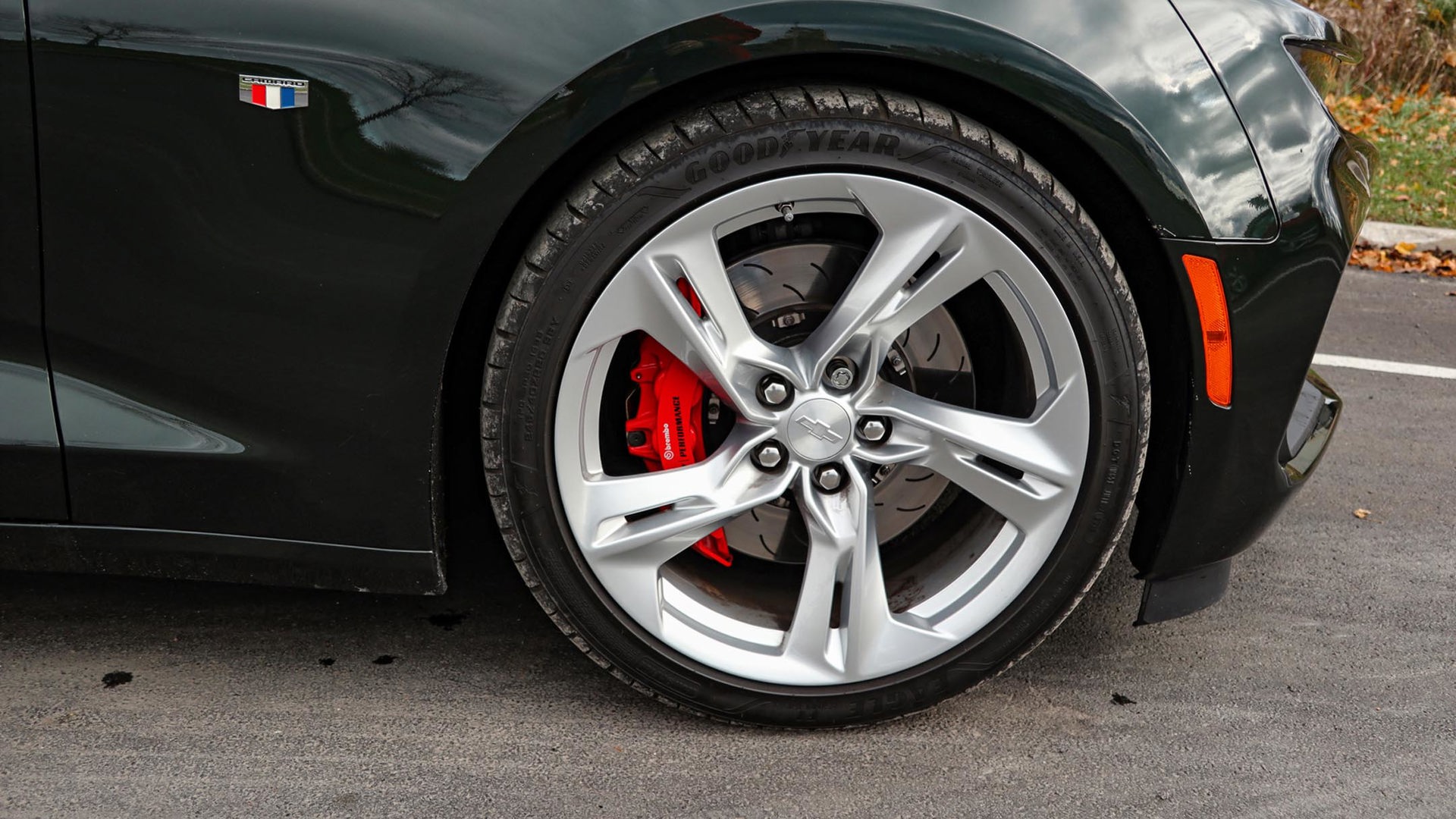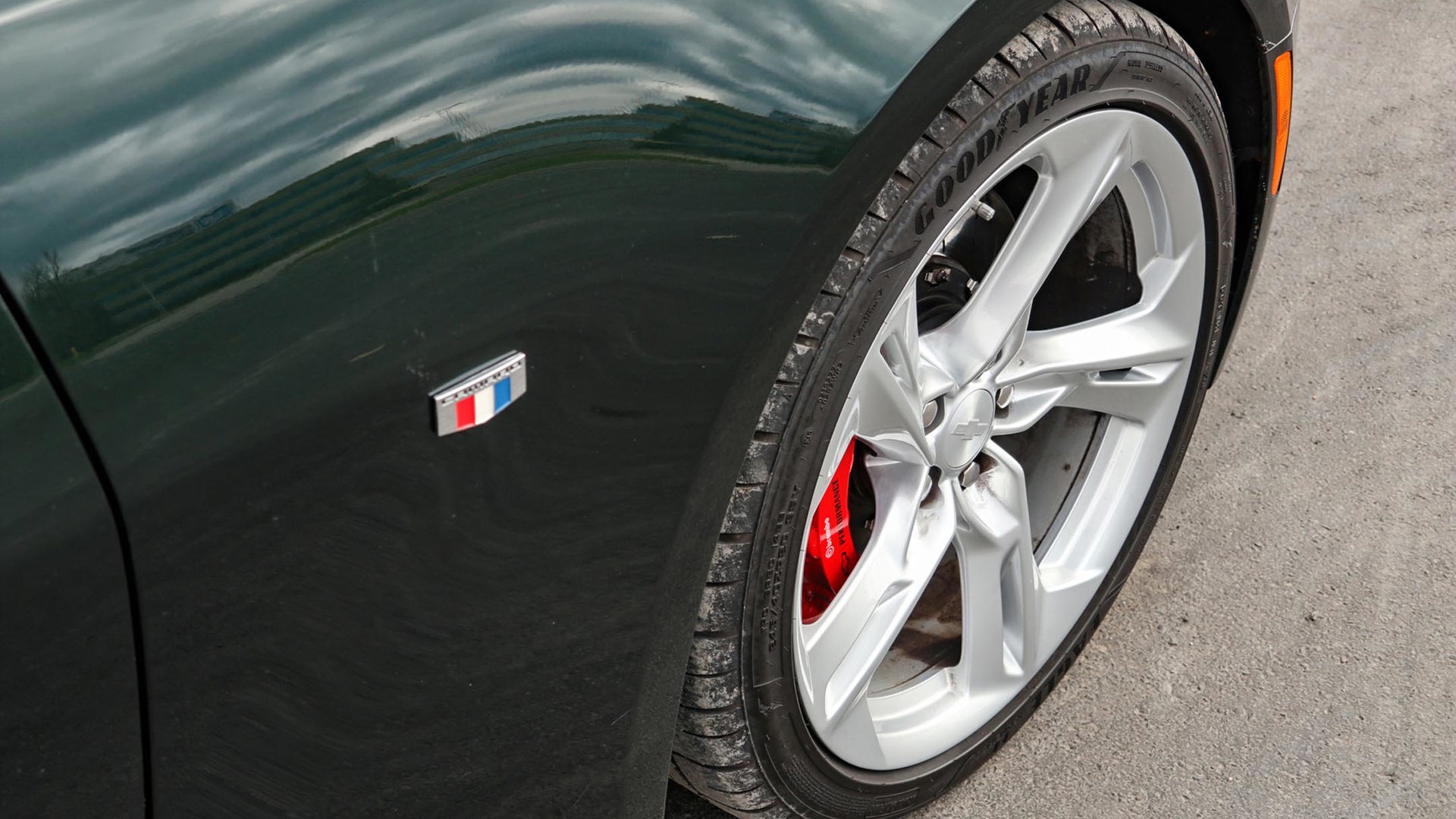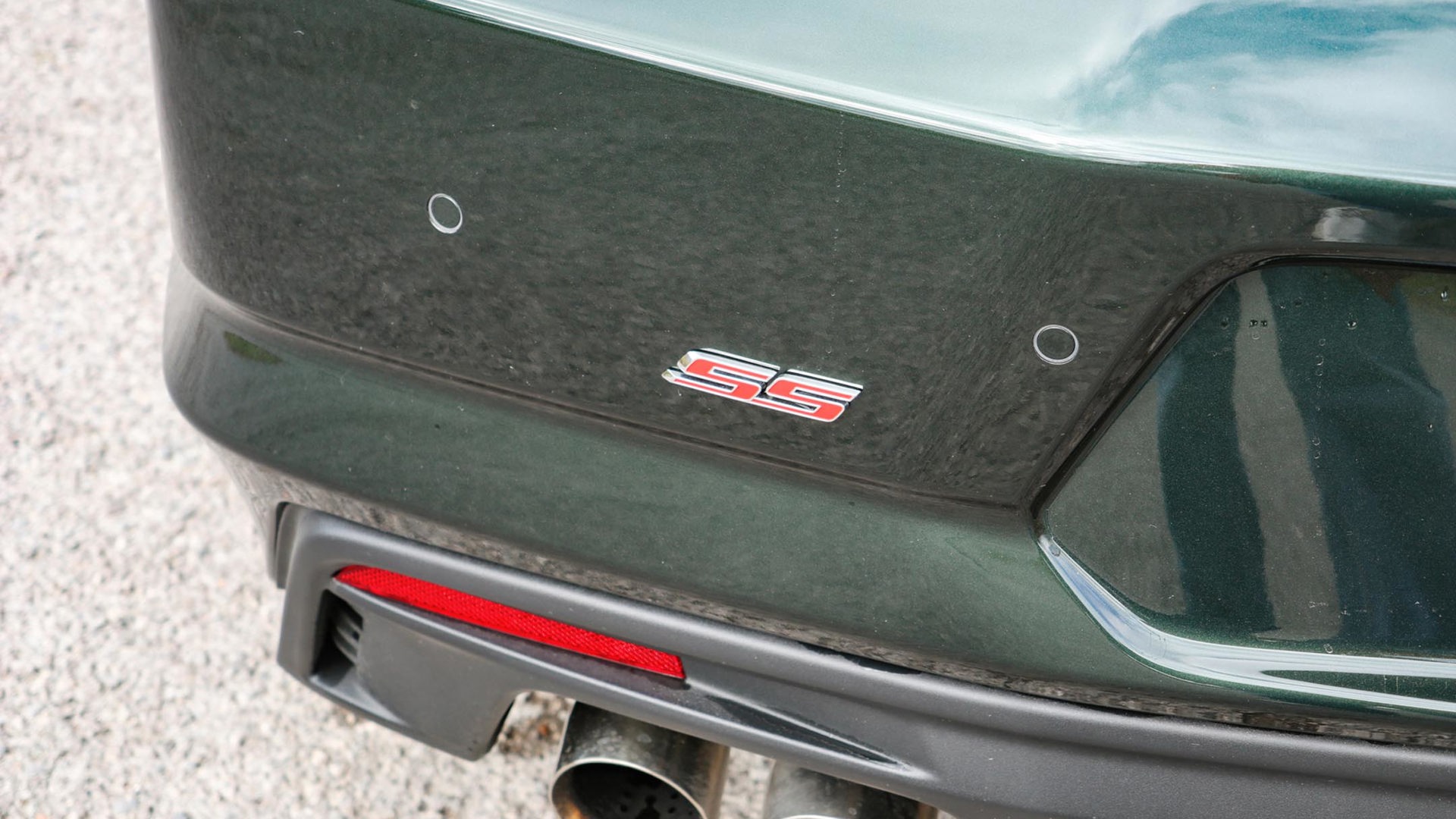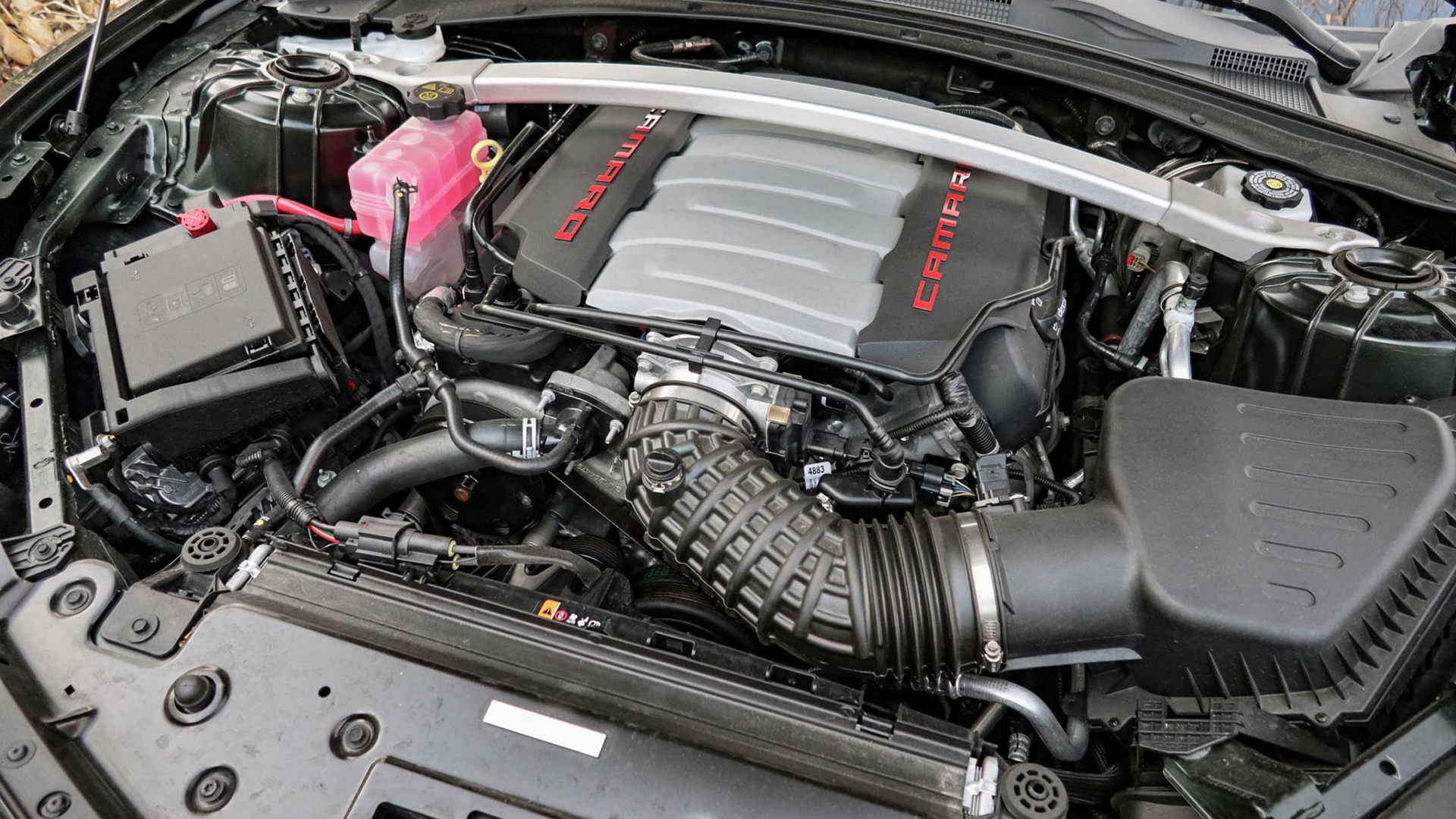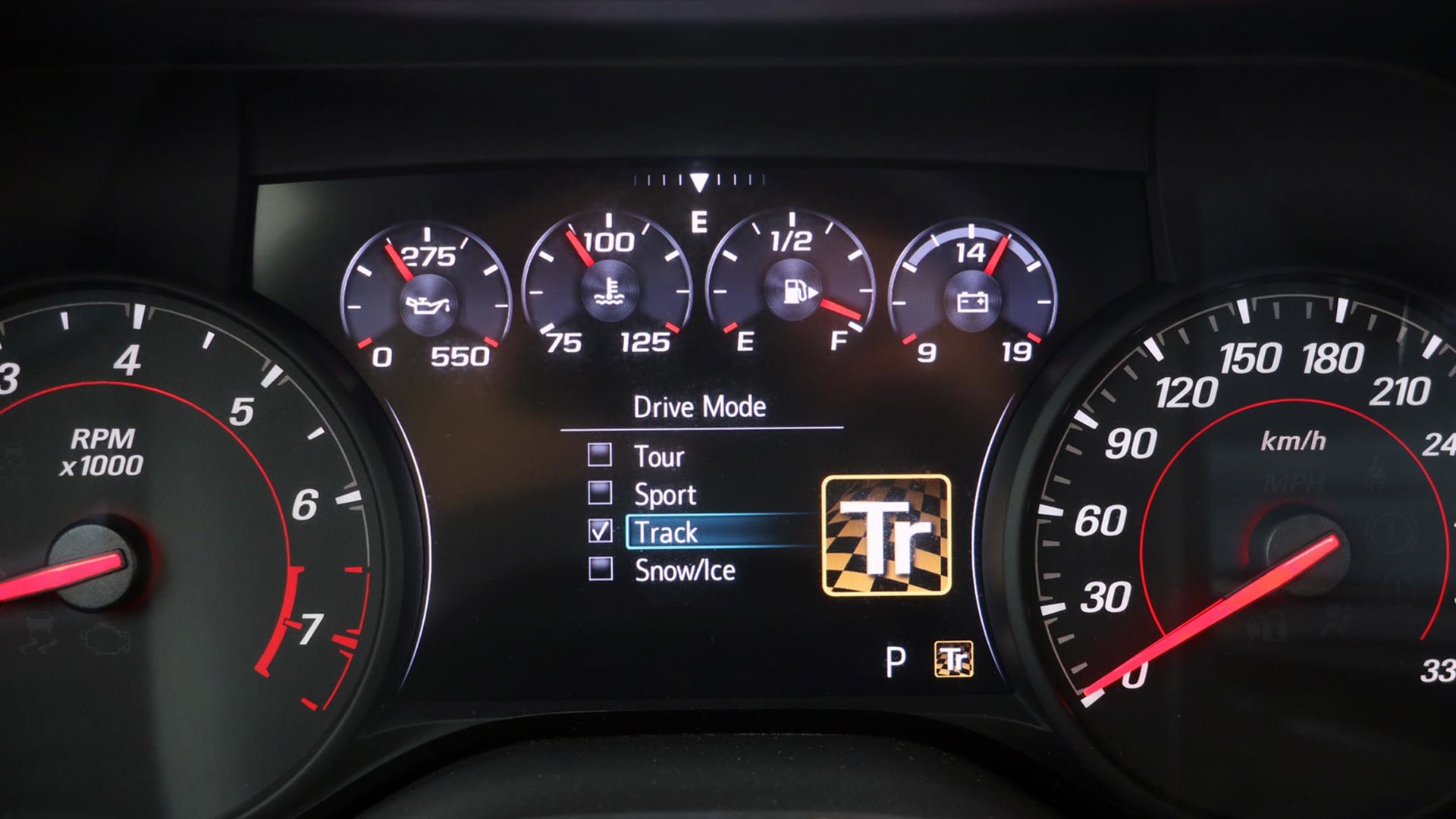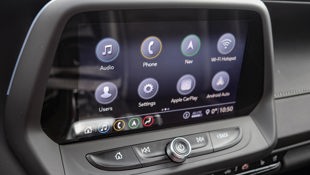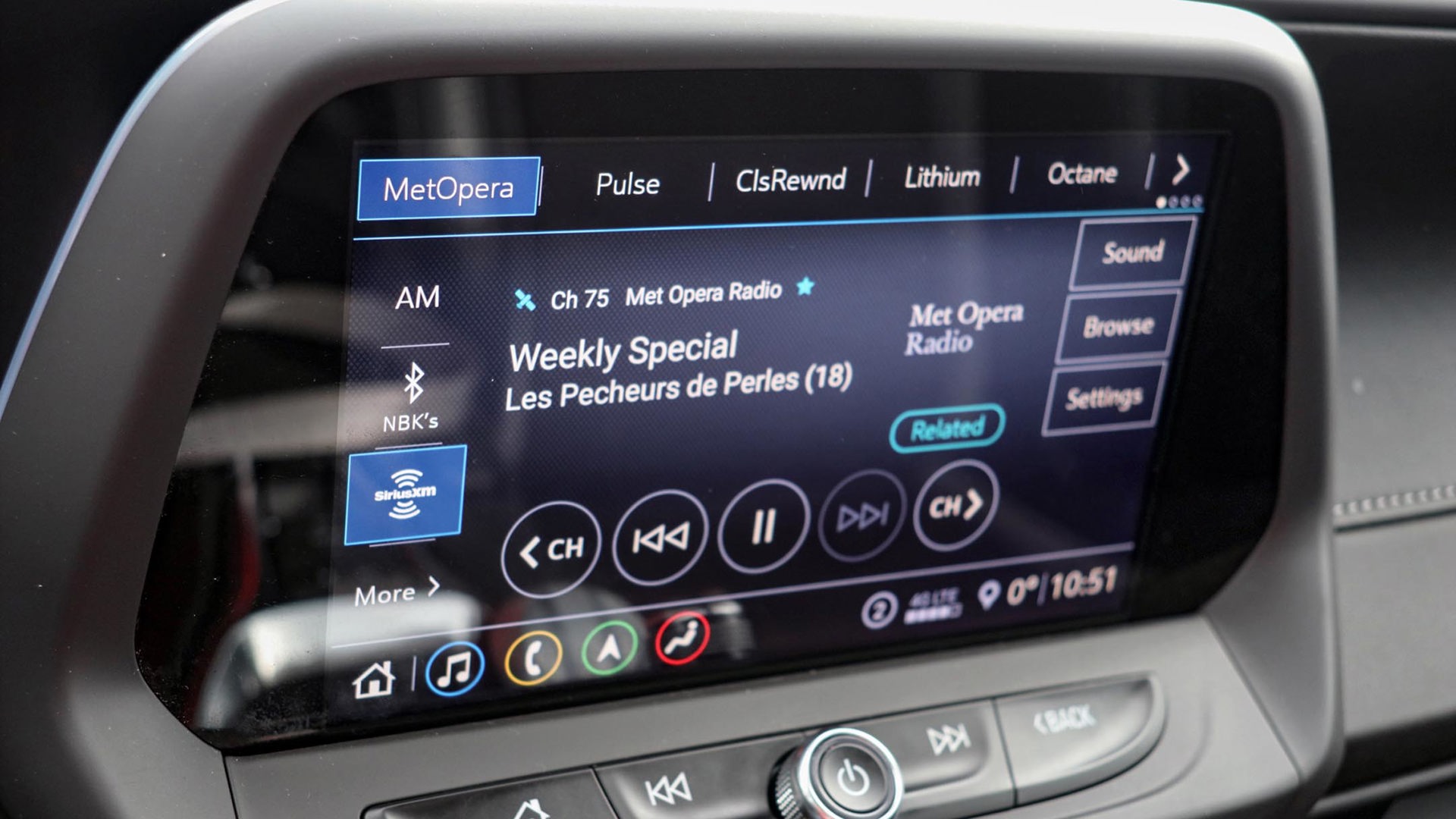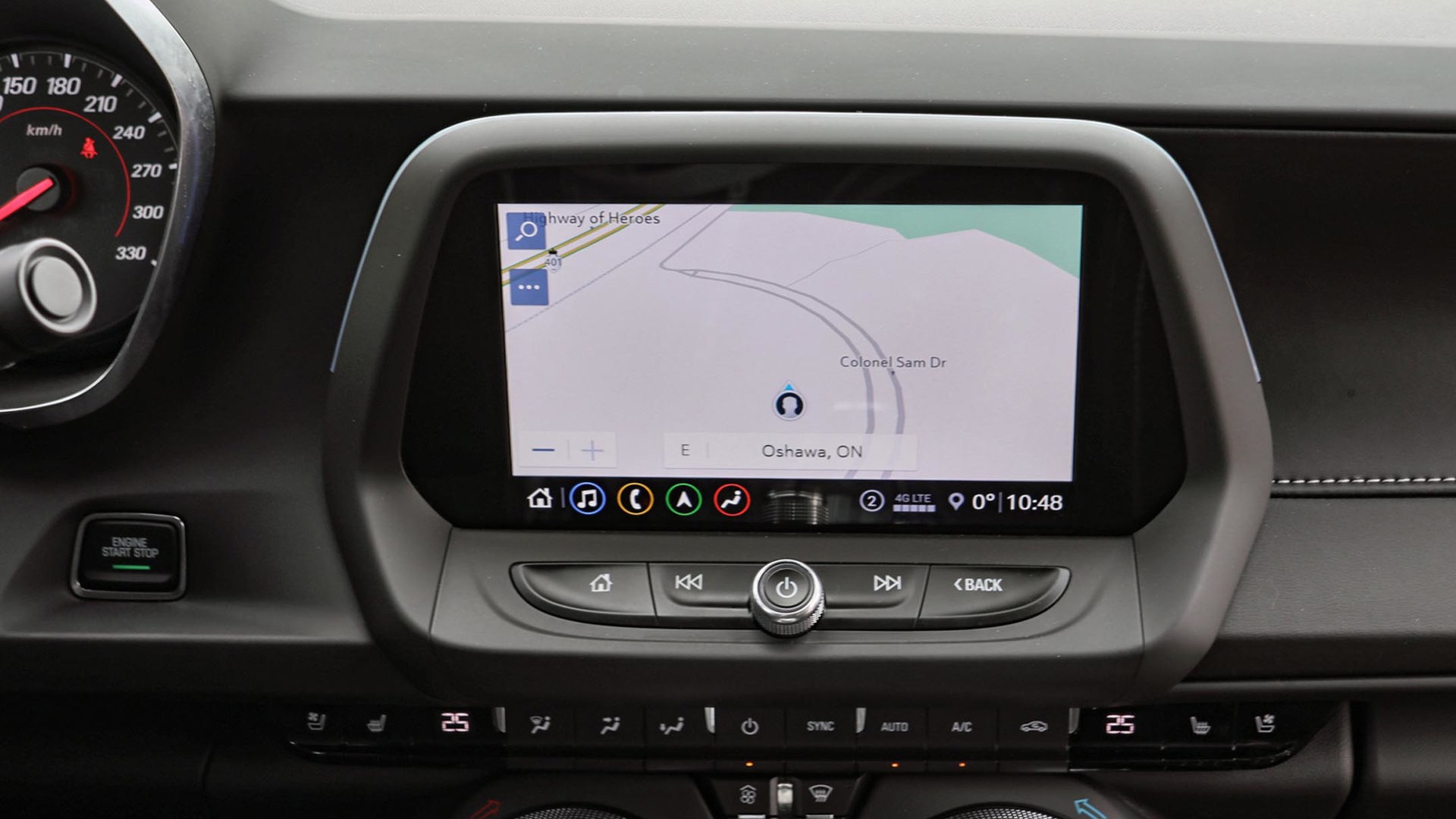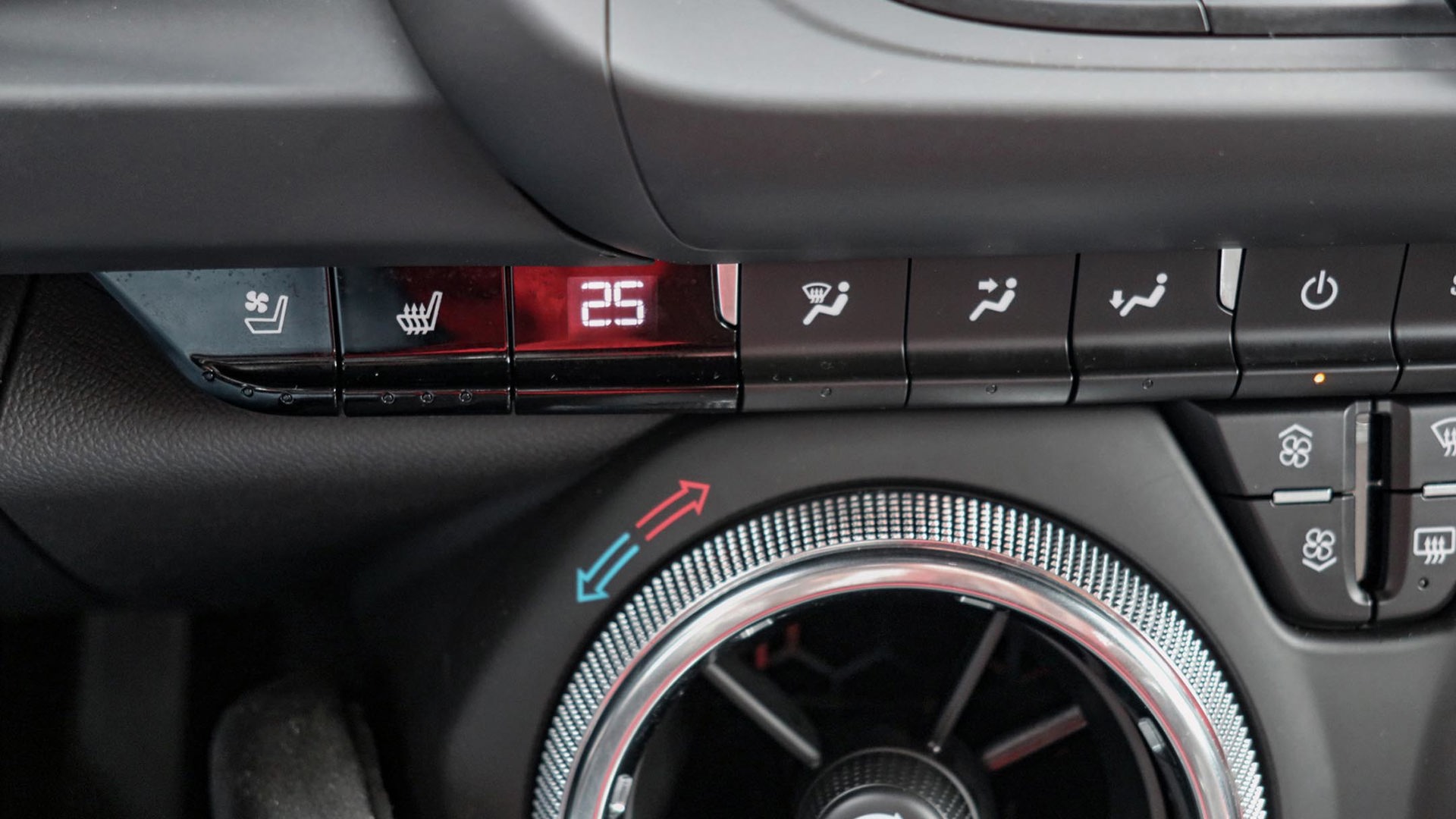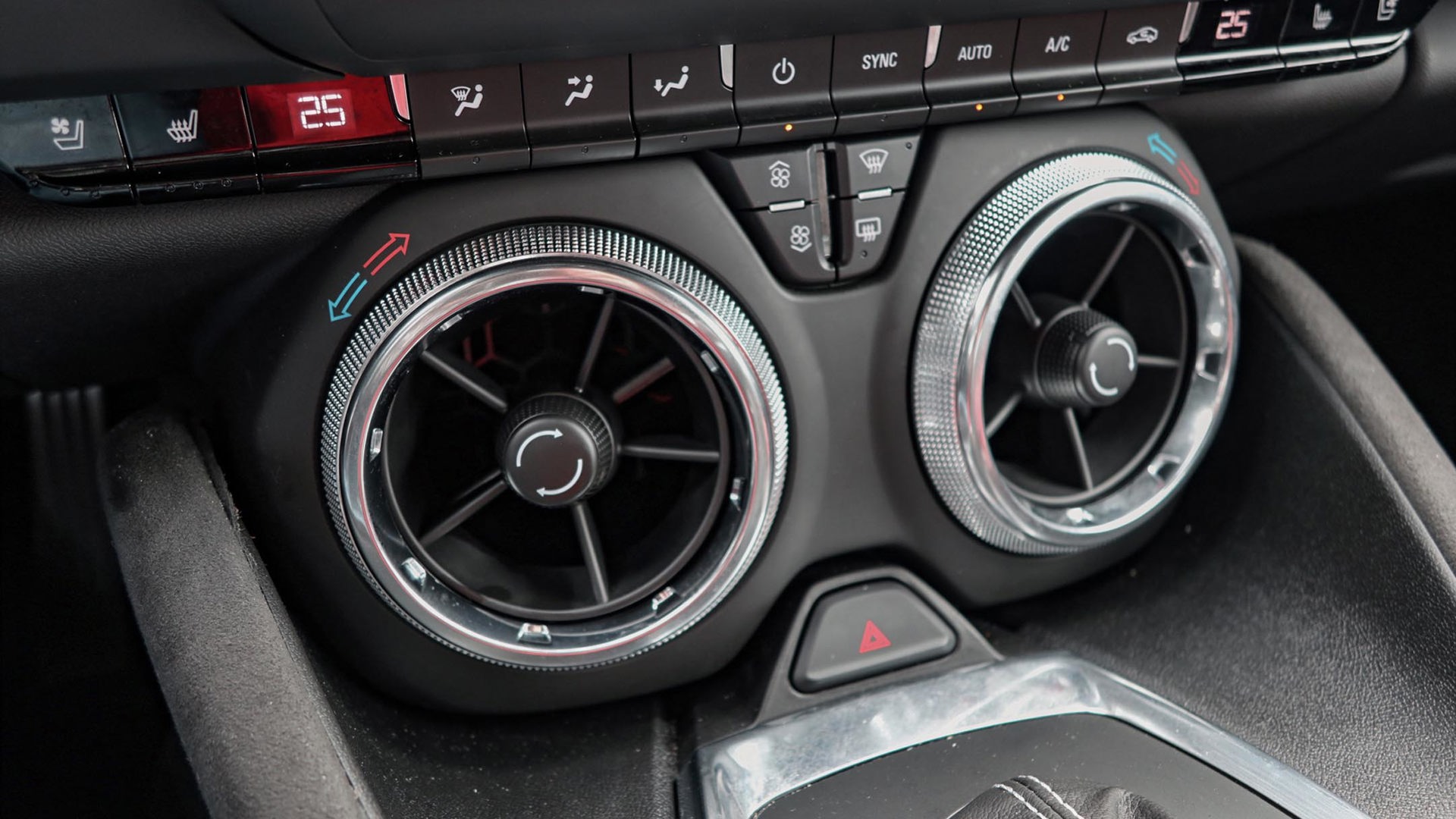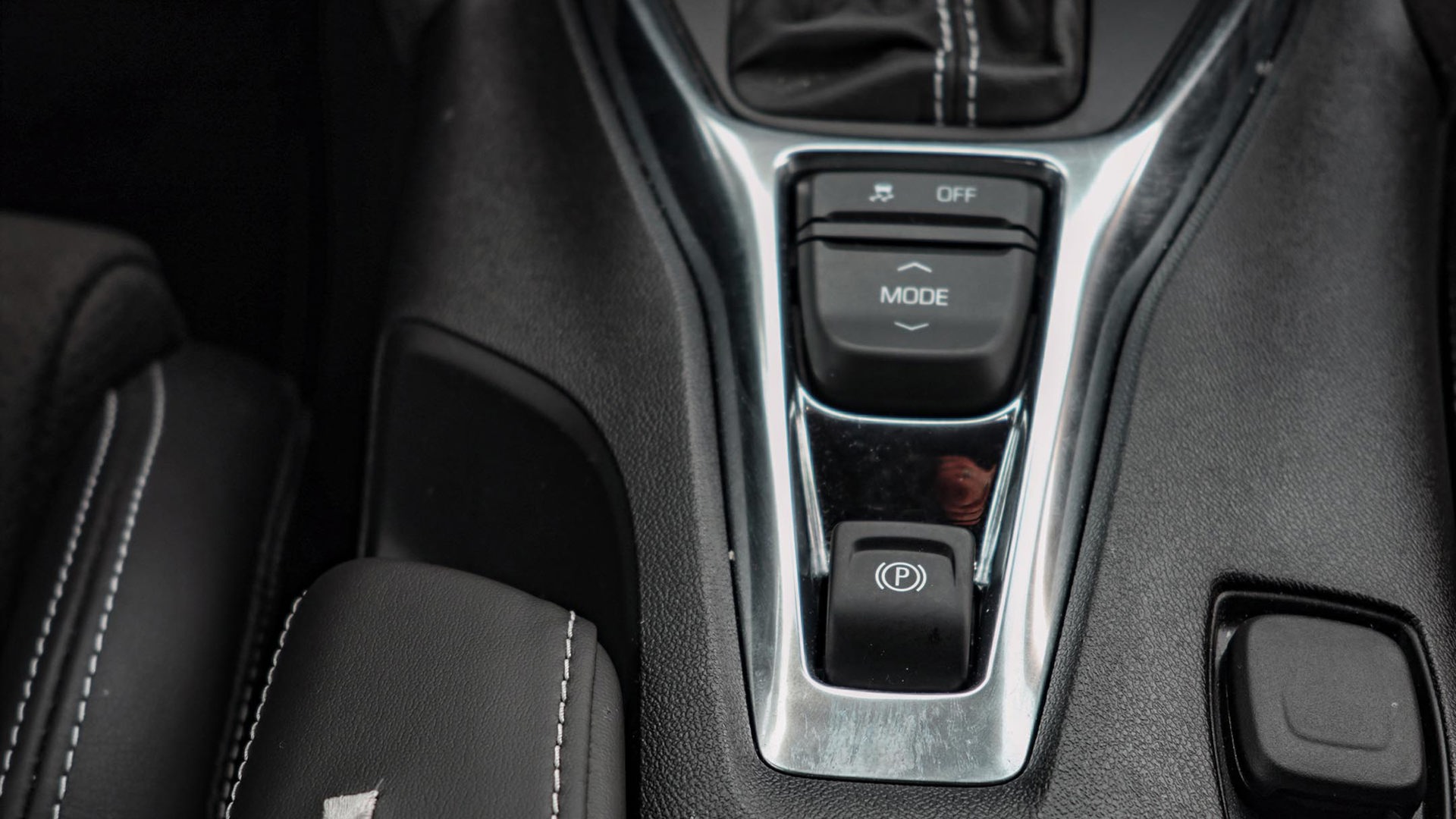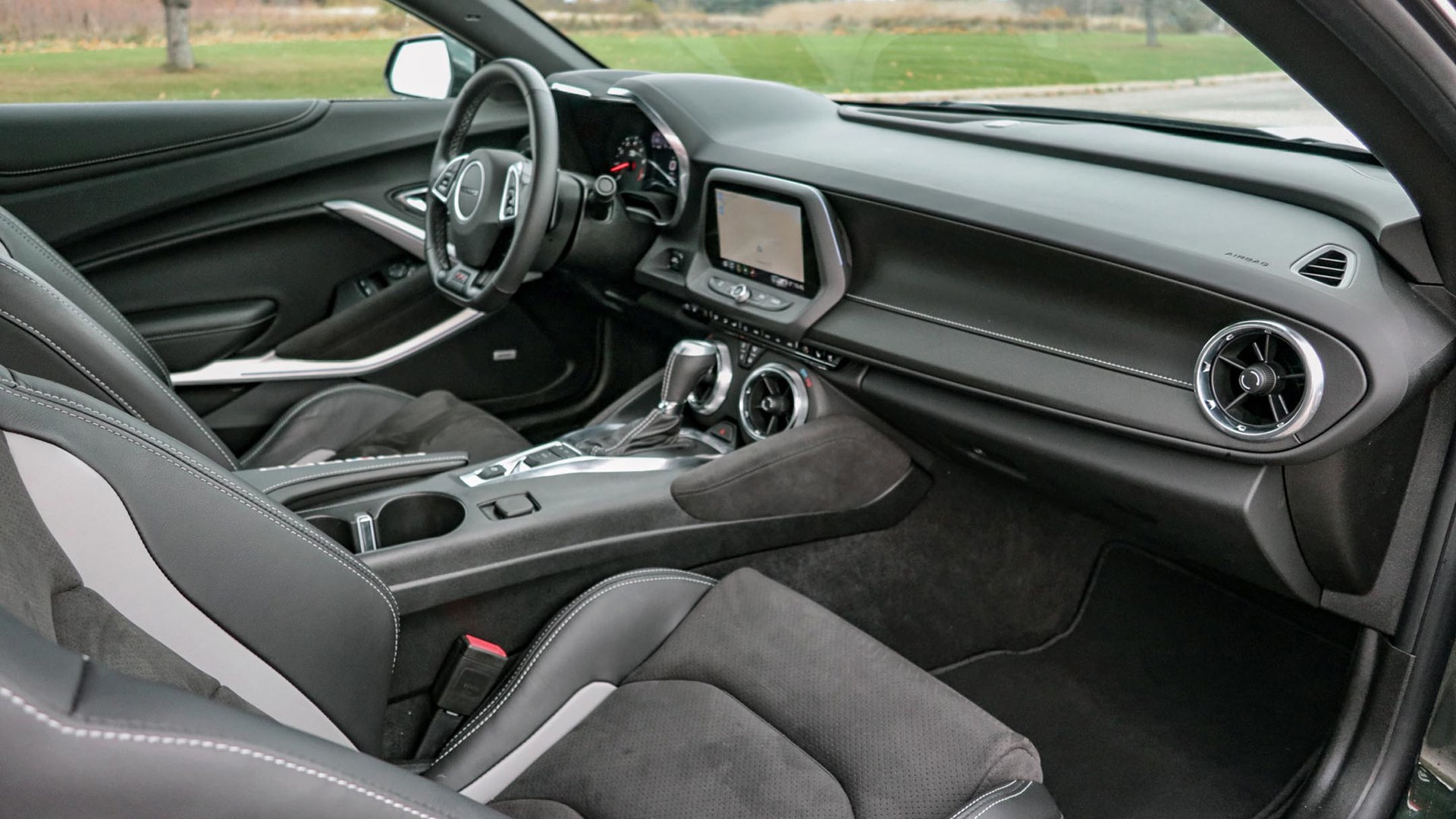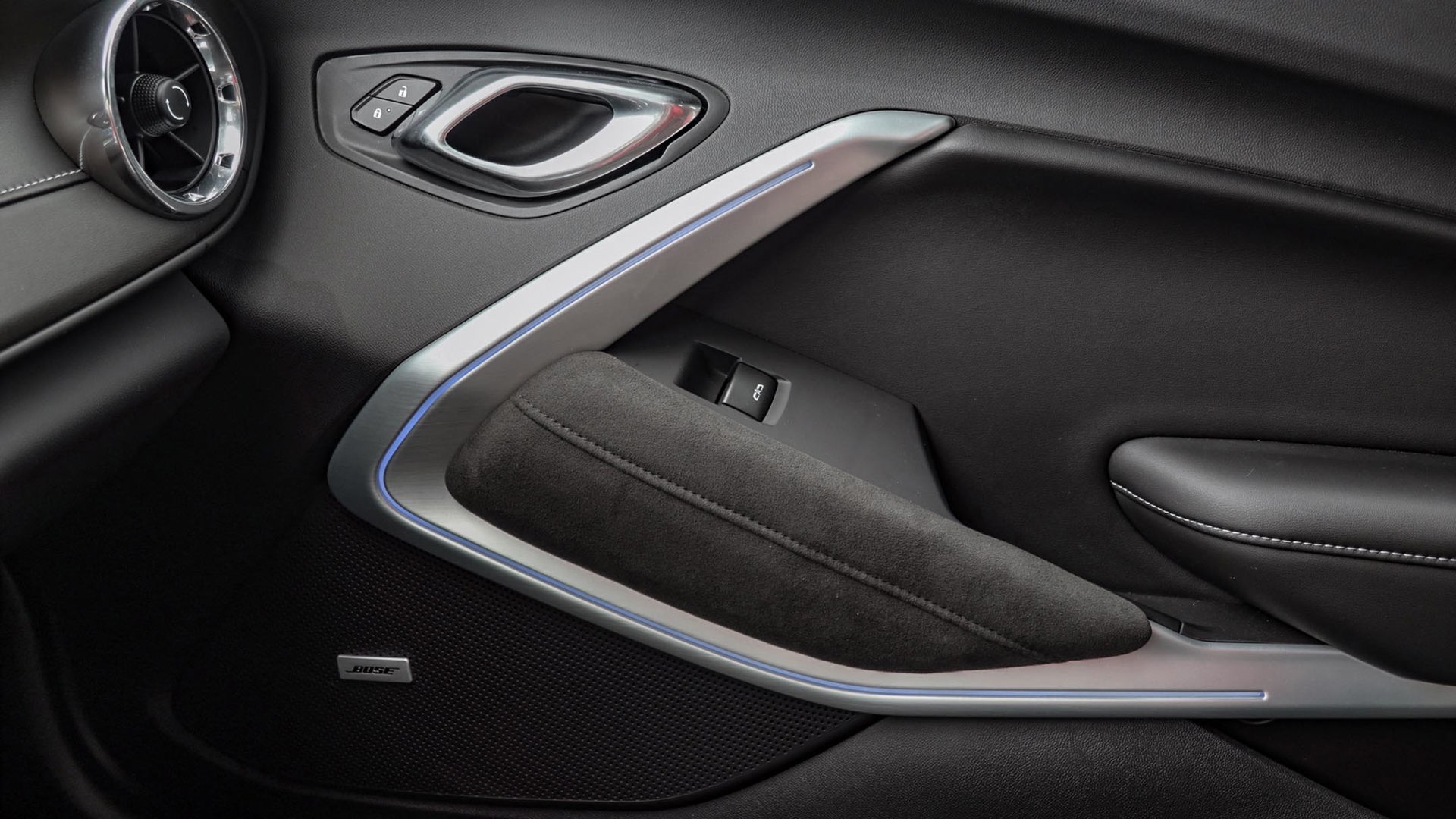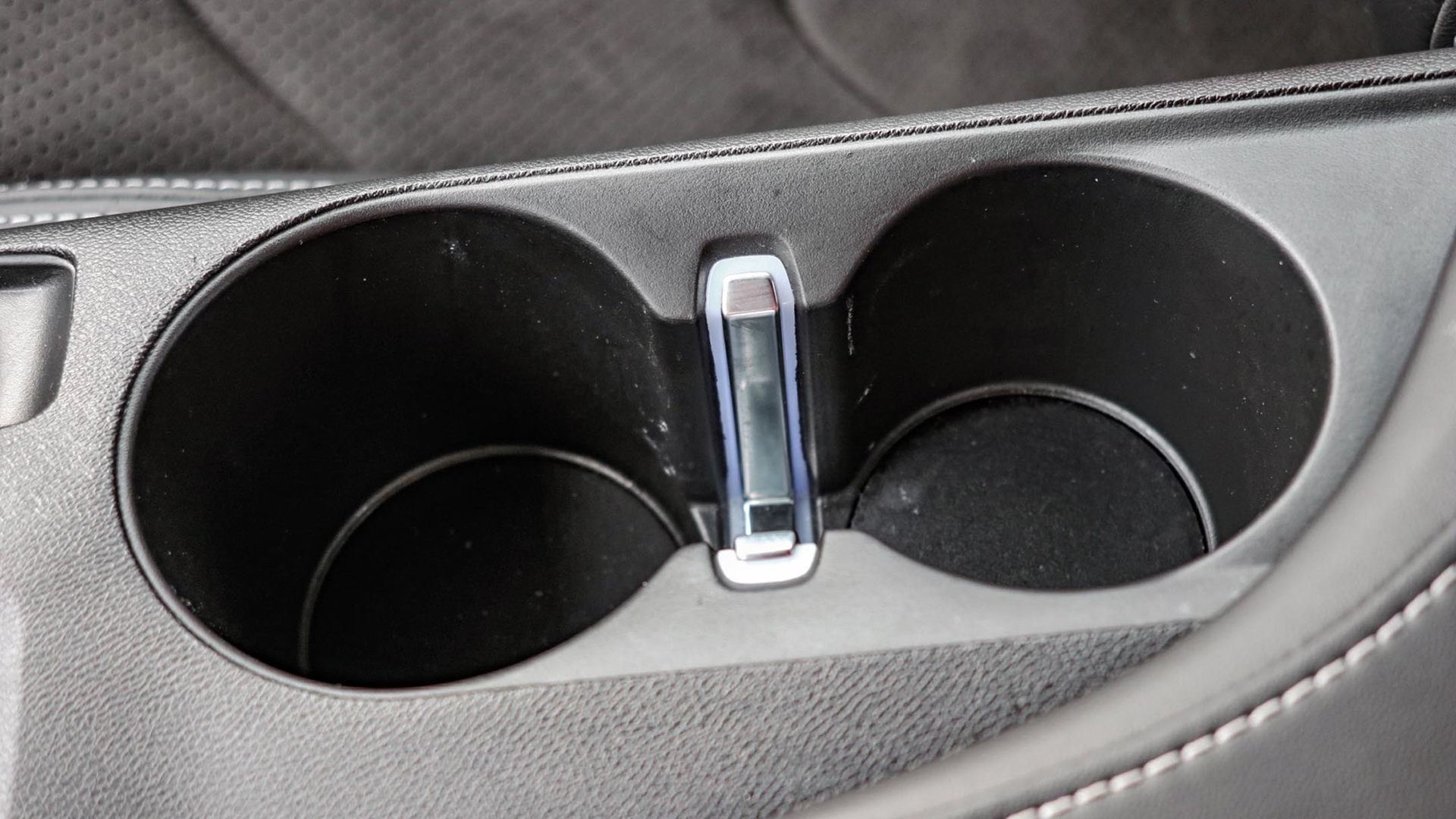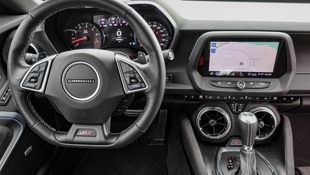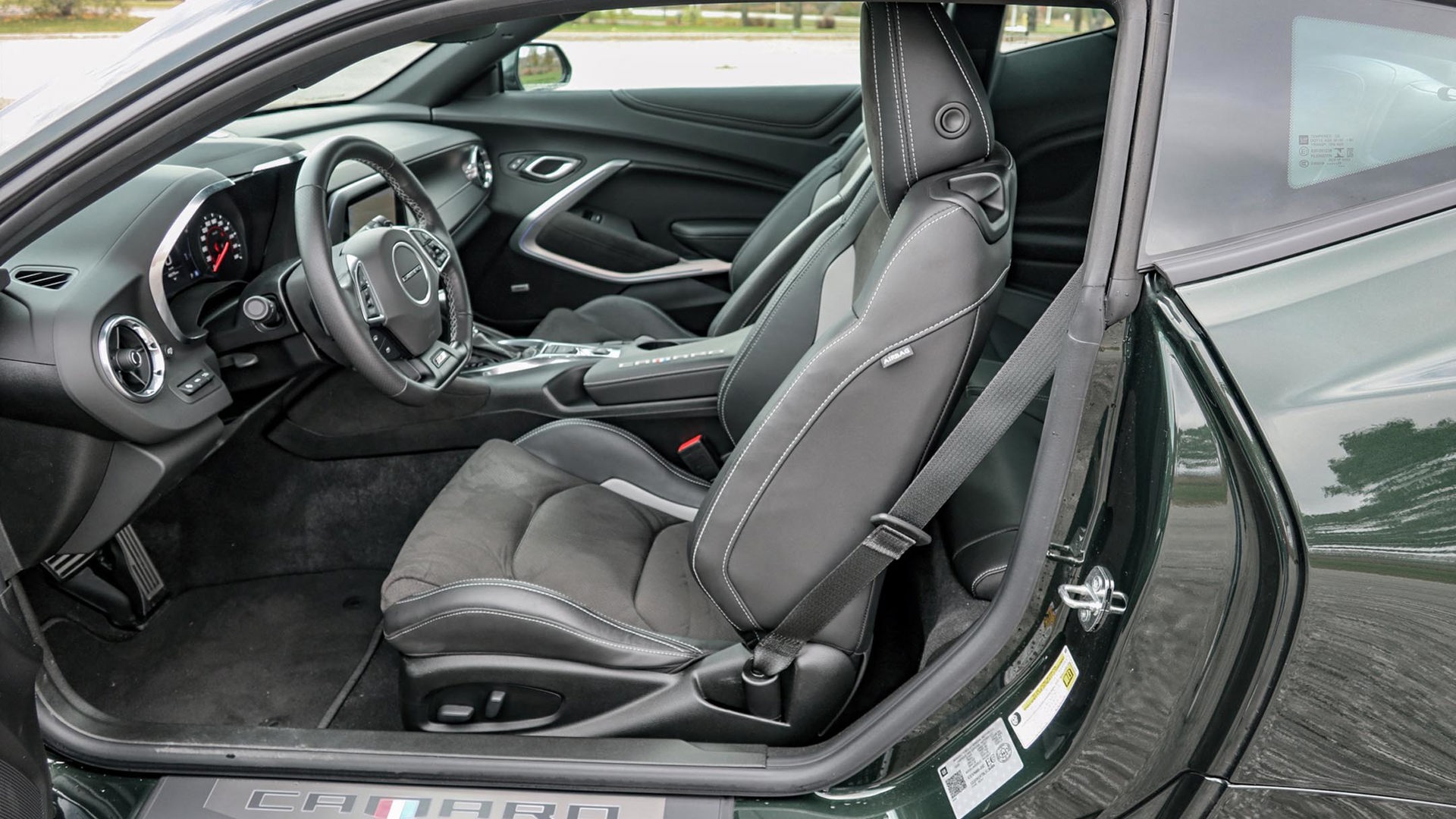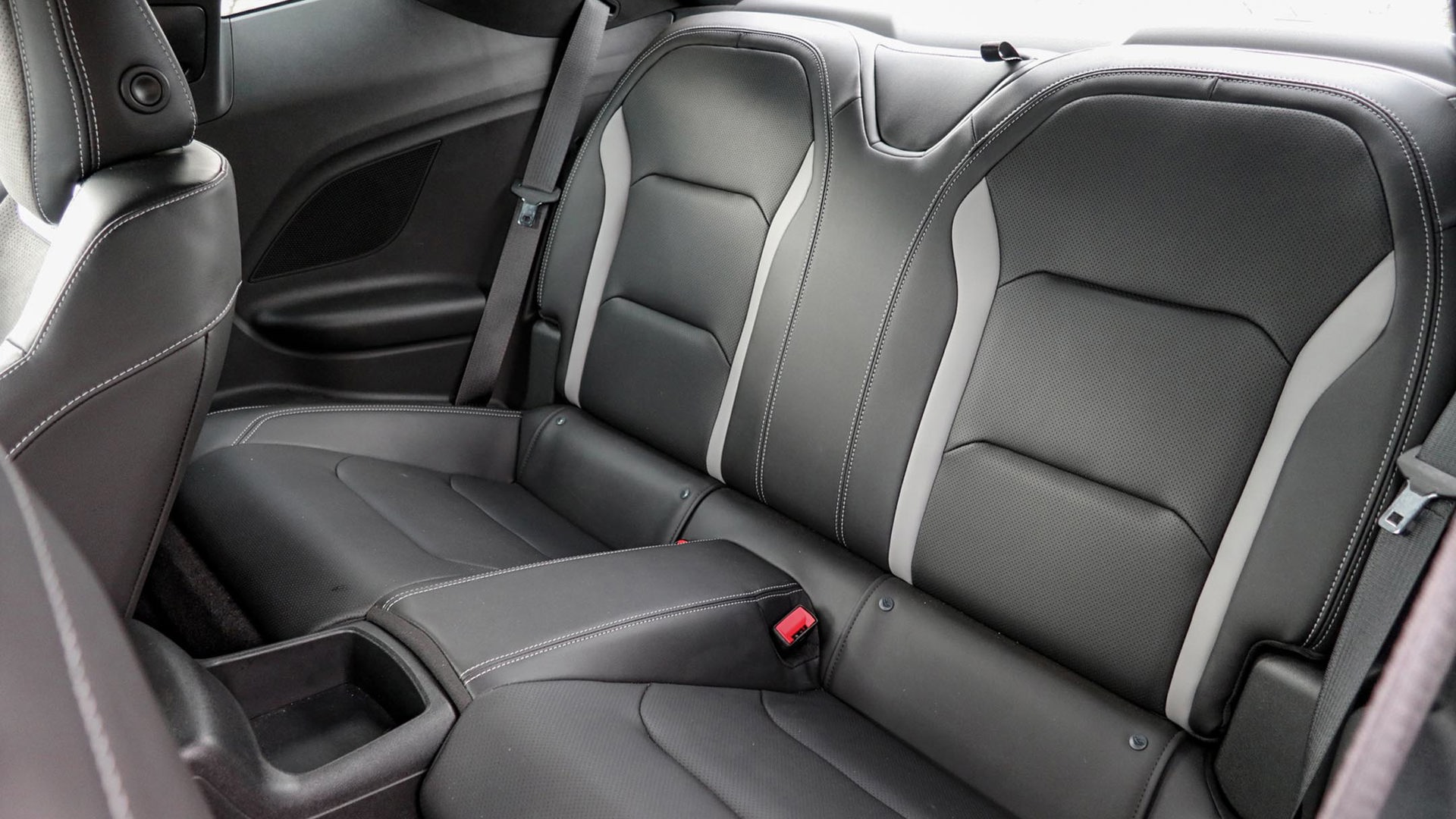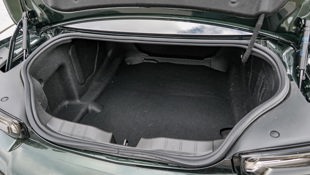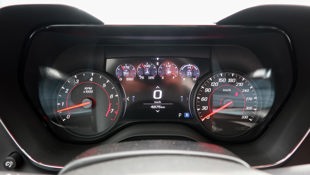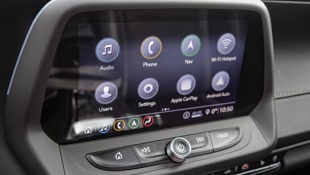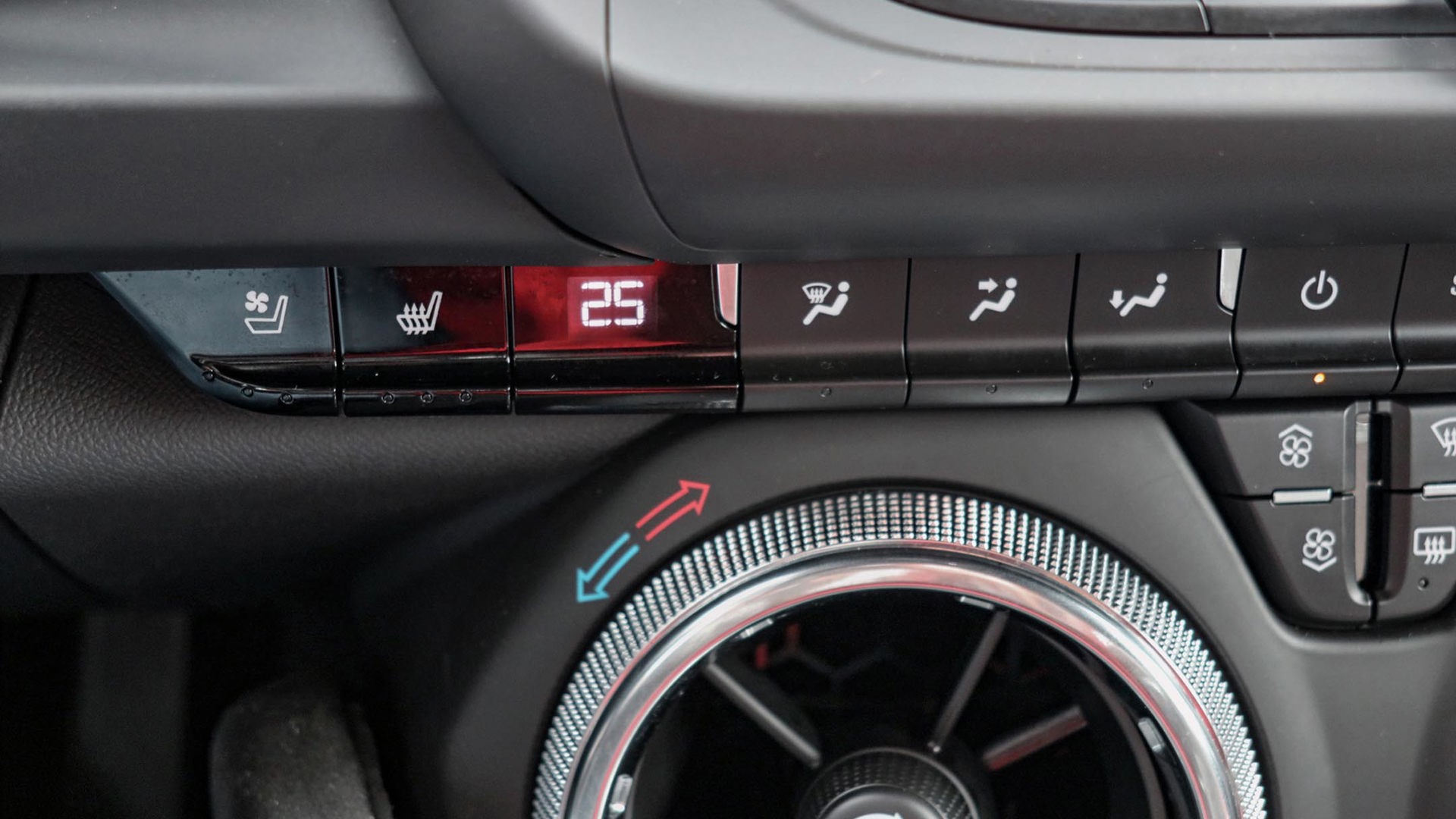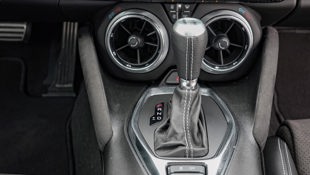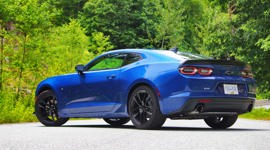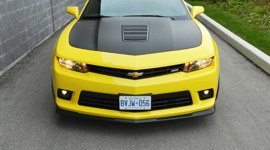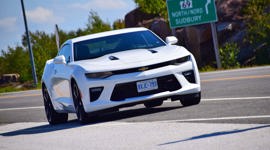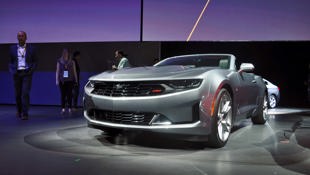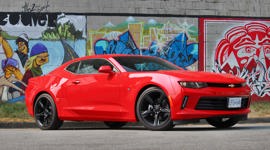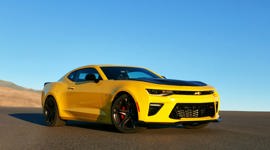 AutoTrader SCORE
AutoTrader SCORE
-
STYLING7/10
-
Safety8/10
-
PRACTICALITY8/10
-
USER-FRIENDLINESS8/10
-
FEATURES9/10
-
POWER9/10
-
COMFORT8/10
-
DRIVING FEEL9/10
-
FUEL ECONOMY8/10
-
VALUE7/10
I love the feel of a lithe, nimble little sports car, but there’s no denying the raw emotional appeal of American muscle.
That’s the triumvirate of Ford’s Mustang, Dodge’s Challenger, and my tester, the Chevrolet Camaro. I had the SS coupe, finished in 2SS trim and powered by a 6.2L V8. For 2020, there are tweaks to the front-end styling and some new available options, including my car’s Rally Green paint. My car started at $49,448, but more than a few add-ons took it to $64,663 before freight and taxes.
Styling: 7/10
While its competitors feature curvier styling, the Camaro is sharper-angled. Styling is always subjective, of course, but I find the front end a little too busy for my liking. I am also not a fan of clear taillights; they should always be red, even when they’re not illuminated.
The new-for-2020 Rally Green paint, a $495 add-on (plus $585 for the black rally stripes on top of it), wouldn’t be my choice either. This car needs more of a look-at-me shade.
My tester’s four-corner Brembo brakes with bright-red calipers are a $5,570 upgrade – a lot of money, but they look the part and do a magnificent job of stopping this machine. The 20-inch wheels with their run-flat summer tires are included on both the 1SS and 2SS trim levels.
Safety: 8/10
Both the United States National Highway Traffic Safety Administration (NHTSA) and the Insurance Institute for Highway Safety (IIHS) speak approvingly of the Camaro. NHTSA gives it the highest five-star rating overall, while the IIHS gives it the highest “Good” for all crash ratings except roof strength, where it receives “Acceptable.”
I would have given it a higher score, but between its low roof and narrow windows, visibility is impeded by a number of blind spots, including an almost impossible over-the-shoulder check. Fortunately, blind-spot monitoring is standard equipment. There’s also a rear-camera mirror that broadcasts a video feed of what’s behind you, unimpeded by the rear pillars or anything in the rear seat. Even so, I find it hard to focus on it with a quick glance, and there’s not much depth perception. I generally flipped the toggle to put it back as a regular mirror.
Practicality: 8/10
Of course a sports coupe isn’t practical, not in the way a sedan or a sport-ute is, and so I’ve judged it on what it is, not what practicality-minded drivers would like it to be. As with its Detroit competitors, it’s a big vehicle overall, but close-coupled inside. My car was optioned with a pair of knee pads on the sides of the centre console, and while I drew in a sharp breath at their tag of $480, your passenger will definitely appreciate it.
As with most sports cars, forget about putting anyone in the back who owns legs. Up front, small-item storage is minimal as well; you have to look at the Camaro as a driving experience, and not as much of a practical one.
User Friendliness: 8.5/10
The whole idea behind a sports car is that you’re concentrating on driving, and so I’ve never understood manufacturers that require you to tap screens or page through menus to access oft-used functions.
In that way, Chevrolet gets it right. Some of the climate function buttons could be larger, or swapped out for dials, but at least they’re hard buttons for quick access. The infotainment touchscreen is intuitive, and with hard controls for volume and the home screen. The head-up display is quickly adjusted with toggle buttons, as are the drive modes. And most brilliant of all, you adjust the temperature by turning the big knurled bezels on the two round centre vents. I’ve never seen a well-designed control method that’s cooler – or hotter – than that.
Features: 9/10
For its $49,448 price tag, the Camaro 2SS comes very well equipped with several premium features, including 20-inch wheels with summer run-flats, auto-dimming driver’s mirror, head-up display, heated and ventilated seats, heated steering wheel (my new gotta-have-it feature), rear camera mirror, forward collision alert, blind-spot monitoring, and rear park assist, in addition to the rearview camera that’s mandatory on all new vehicles.
The stock infotainment unit is an eight-inch touchscreen with Bluetooth audio streaming for two devices, Apple CarPlay and Android Auto, and satellite radio and a 4G LTE Wi-Fi hotspot, those last two on a trial basis with a subscription needed afterwards. My tester was upgraded to a premium system with navigation for an additional $795.
Power: 9/10
The Camaro offers four engines, starting with a turbocharged 2.0L four-cylinder making 275 hp, and then a 3.6L V6 engine with 335 hp. My tester came with a 6.2L V8, making 455 hp and 455 lb-ft of torque, while the final step up, the ZL1, supercharges that V8 up to 650 hp and 650 lb-ft of torque.
The popular idea is that bigger is always better, but my engine was a perfect fit to the car, with more than enough to get it moving in a hurry, but with decent manners on an everyday drive. The default transmission is a six-speed manual with rev-matching function, but for an additional $1,835, my car was optioned with a ten-speed automatic that could sometimes get a little busy, but worked well overall. When matched to the automatic, the V8 gets cylinder deactivation for a little assist to fuel consumption when full power isn’t required.
Comfort: 8/10
My tester contained a set of Recaro performance front seats, for an additional $1,595, clad in leather with perforated suede-style inserts, and they were heated and ventilated. They lived up to their promise, with supportive bolsters that weren’t so large that they made it tough to get in and out, and with enough adjustment that I could easily find the right driving position.
Driving Feel: 9/10
Chevy knows how to do muscle, full stop. This V8 is excellent, with strong and throaty performance. There’d be more engagement with the manual transmission, but the automatic is no slouch, and responds well to the paddle shifters on the wheel.
The steering is beautifully weighted and very responsive. My car was equipped with magneto-rheological dampers for $1,895, a system that uses sensors to detect road and driving conditions. The fluid in the shocks contains metal filings, and when magnets are electrically activated by the sensors, they adjust the filings to tighten or soften the suspension as needed. You get great control in the corners, and a firm but smooth ride on most pavement surfaces. On one long rural drive I ended up on some washboard roads, where the ride got teeth-chattering harsh – but where most vehicles would have been all over the road with every bump, the Camaro held straight on its path.
Fuel Economy: 8/10
You wanna play, you gotta pay. The Camaro with automatic transmission is officially rated by Natural Resources Canada (NRCan) at 14.6 L/100 km in the city; 8.9 on the highway; and 12.1 in combined driving. In my week with it, I racked up 12.6 L/100 km.
That 12.1 L/100 km combined is about the ballpark for this segment, if you compare V8 to V8 with an auto ’box. Dodge’s Challenger averages 12.3 L/100 km for its 5.7L V8, and 13.0 for its 6.4L V8, while Ford’s 5.0L V8-powered Mustang is rated at 12.3 L/100 km.
Value: 7.5/10
Equipped with the 6.2L V8, the Camaro starts at $41,548 in LT1 trim, rises to $44,548 for the 1SS, and then to $49,448 for my 2SS coupe. Over at Dodge, you’ll start around $41,000 for a 5.7L V8 with 375 hp, and $52,595 for a 6.4L V8 making 485 hp. Overall, the Mustang is the bang for the buck here, with a 5.0L V8 making 460 hp that starts at $40,790.
My tester was very well equipped for its starting price, but was then upgraded with some very pricey options; embroidering the Camaro name onto the console lid was $415, for example. If anything, between its low-key paint and fairly pedestrian-looking wheels, my car’s main issue was that it didn’t look almost $65,000. Part of assessing value isn’t just what a vehicle has in it, but the impression it presents on the road.
The Verdict
The Camaro offers four engine choices, but I like this V8: it’s powerful but not over-the-top, set into a well-balanced chassis that’s fun whether the road is straight or curved. It has some serious competition, but Chevy’s muscle more than holds its own.
| Engine Displacement | 6.2L |
|---|---|
| Engine Cylinders | V8 |
| Peak Horsepower | 455 hp @ 6,000 rpm |
| Peak Torque | 455 lb-ft @ 4,400 rpm |
| Fuel Economy | 14.6/8.9/12.1 L/100 km city/hwy/comb |
| Cargo Space | 257 L |
| Model Tested | 2020 Chevrolet Camaro 2SS Coupe |
| Base Price | $49,448 |
| A/C Tax | $100 |
| Destination Fee | $1,750 |
| Price as Tested | $66,513 |
|
Optional Equipment
$15,215 – Brembo 6-piston front and 4-piston rear brakes, $5,570; Magnetic Ride Control, $1,895; 10-speed automatic transmission, $1,835; Recaro front seats, $1,595; Dual-mode performance exhaust, $995; Premium infotainment with navigation, $795; Black metallic rally stripes, $585; Rally Green metallic paint, $495; Black knee pads, $480; Embroidered centre console lid, $415; Strut tower brace, $315; Sport pedal kit, $240
|
|
